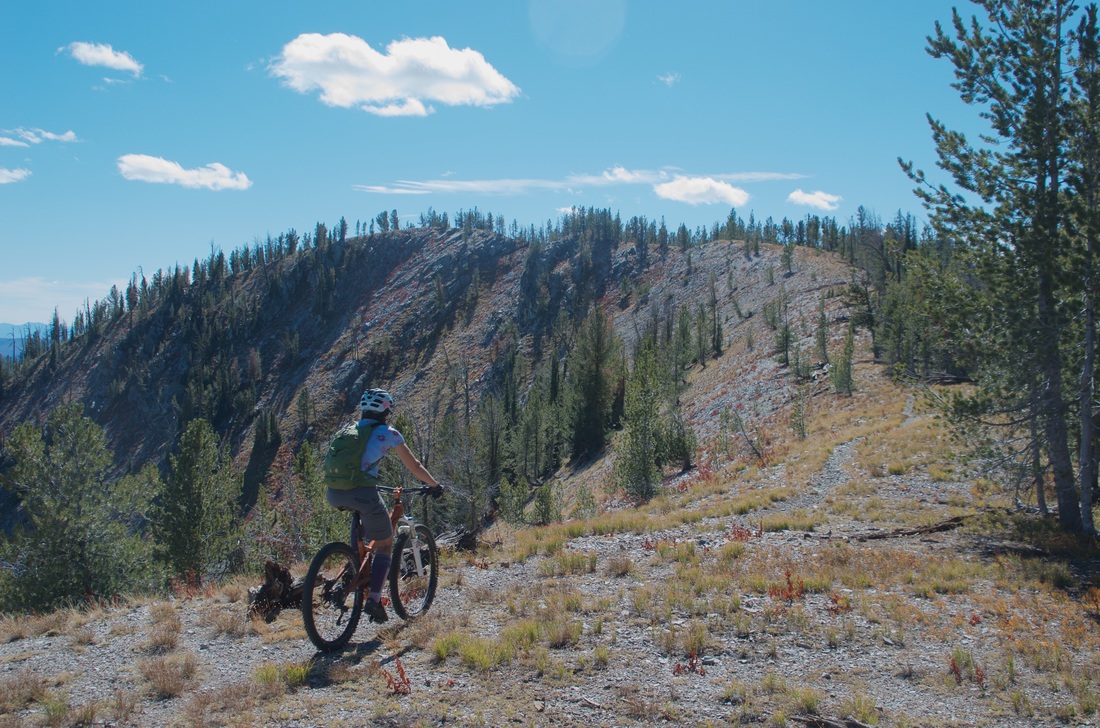
Editor’s Note: The opinions expressed in this commentary are the author’s and do not necessarily represent the opinions of Singletracks.com.
While May is National Bike Month, it’s also the time when trails dry out for many of us. We can finally get out to enjoy the outdoors again, and resume our trail maintenance activities. So while it may be “bike month,” it’s also a great time to recognize and acknowledge that mountain bikers are actually part of a much larger community of outdoor enthusiasts and trail users. Unfortunately, different user groups often see each other as adversaries, viewed with distrust, and keep each other at arm’s length rather than focusing on what we all have in common: a love for an active, outdoor lifestyle and an innate desire to protect and conserve the wild places where our spirits roam free.

One of my fondest outdoor community memories comes from my first mountain biking road trip to Montana. I was looking forward to riding one of the many wonderful trails in the Gallatin National Forest south of Bozeman, although I had heard the trail was plagued by deadfall and some sketchy sections of trail. Nevertheless, I headed out, fully expecting a good number of dismounts. Much to my surprise — and pleasure — the trail was in fine condition and I could see the remnants of recent deadfall clearing.
The next day I met with a Bozeman local who told me about a wonderful partnership that restored the trail to a usable condition. The local equestrian club had partnered with the local bike club in a joint trail clearing venture. Horses are really good at hauling tools into the backcountry. After the equestrians hauled their tools into the woods, they handed the tools over to the cyclists who had pedaled back there and were waiting to work. The cyclists spent the day clearing trail after which the equestrians hauled the tools back out.
It’s exactly this kind of synergy that makes the trails better for all of us, regardless of which user group(s) we may identify with. When the Southwest Montana Mountain Bike Association teamed up with the Gallatin Backcountry Horsemen, they created a model for the rest of us to follow, and a model that could be used to restore many miles of trails lost to lack of use and overgrowth in our remote backcountry areas and Wilderness.

In my personal stomping grounds of southern Colorado, I am blessed to have the opportunity to work with a number of similar organizations which are more concerned with uniting all trail lovers than with dividing us among who gets to do what, where, and when. Some are private, some are public, some are nonprofit, and most are focused on providing equal opportunity for outdoor lovers of all types. Some of the groups are focused on a particular area, like the Friends of Ute Valley Park, Friends of the Peak (Pikes Peak, that is), or Guardians of Palmer Park. Other organizations, like the extremely active and inclusive Rocky Mountain Field Institute, go wherever their efforts can have a positive impact.
Just south of Colorado Springs, Fremont Area Recreation has united everyone from cyclists to hikers to rock climbers to provide regional backcountry opportunities for all, transforming Cañon City into a genuine outdoor hub for enthusiasts of all types. All of these organizations rely on volunteer labor and donations. All of them understand that together we are stronger and that our voices united in support of our natural places is the key to their preservation.
[see_also id=’249086′]

While Colorado Springs residents and others throughout Southern Colorado have the pleasure of enjoying the fruits of these organizations’ labor, we as a nation don’t have a similar level of cohesiveness. Sadly, things are the opposite, as national lobbying organizations seek to exclude other groups, and most often bicyclists. As national organizations like the Sustainable Trails Coalition, along with the many local cycling advocacy clubs, seek to restore lost access or merely preserve current cycling access to our backcountry areas, we need to partner with other outdoor enthusiasts in our efforts.

So as you enjoy, and hopefully engage in, National Bike Week, I encourage you to look for opportunities to partner and build bridges with other outdoor organizations focused on improving access and conditions for all low-impact users. Use the comments section below to let us know about local or regional multi-user trail advocacy groups, or contact the Sustainable Trails Coalition to share the names of potential sister organizations.






















5 Comments
May 19, 2019
May 19, 2019
Which, to tell you the truth, I have no Idea why STC would even be
mentioned in this article.
May 19, 2019
May 23, 2019
https://mountainjournal.org/scientists-say-mountain-biking-negatively-impacts-bears
May 19, 2019
And if anything, the Canon City example shows everyone how mountain biking can succeed without intruding into Wilderness Areas, which STC is advocating. IMBA's new slogan is "More Trails Closer to Home." They are absolutely right. More mountain biking trails are needed where people live, not out in the middle of nowhere. Let's allow wildlife to have their own space.